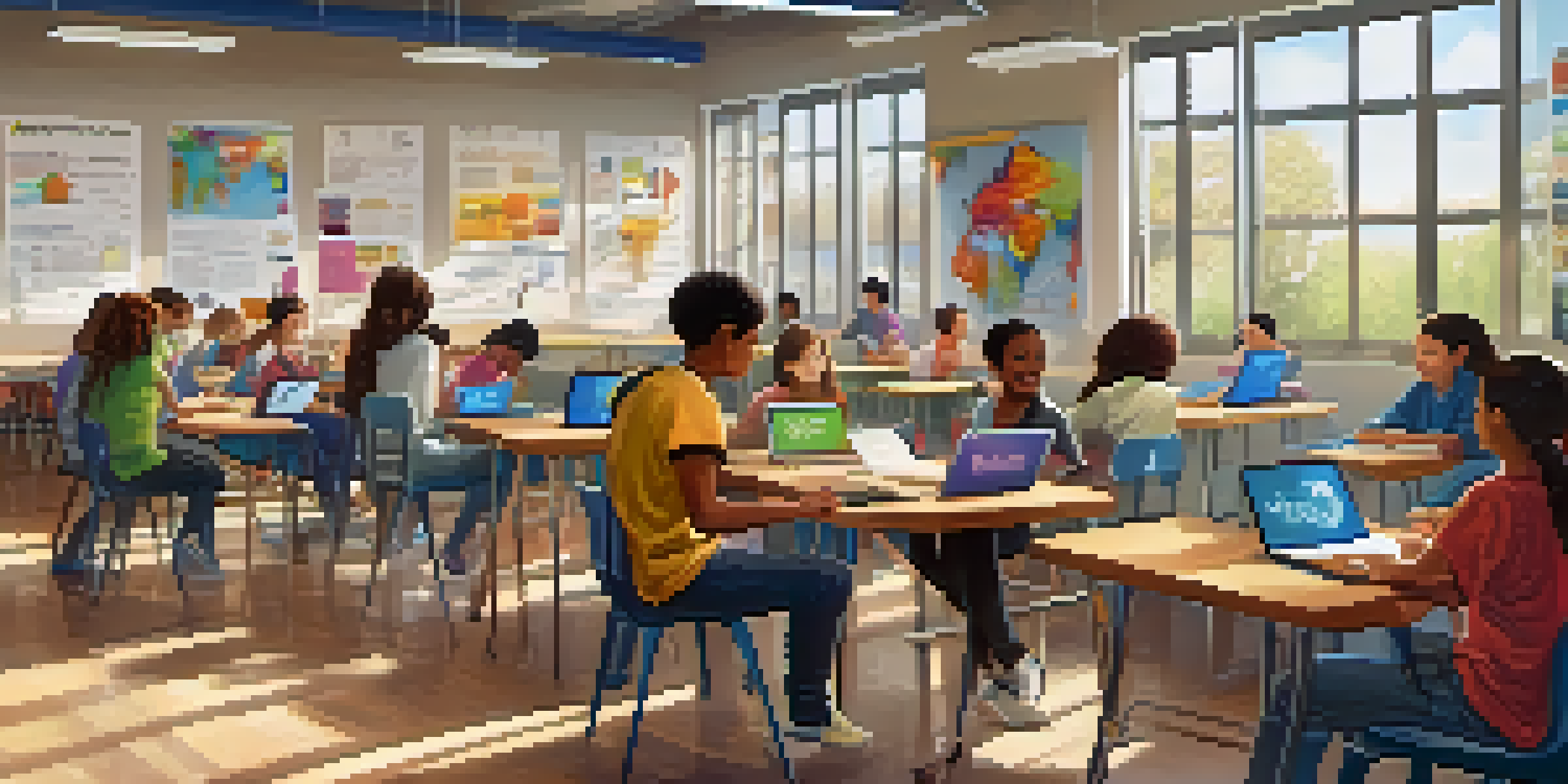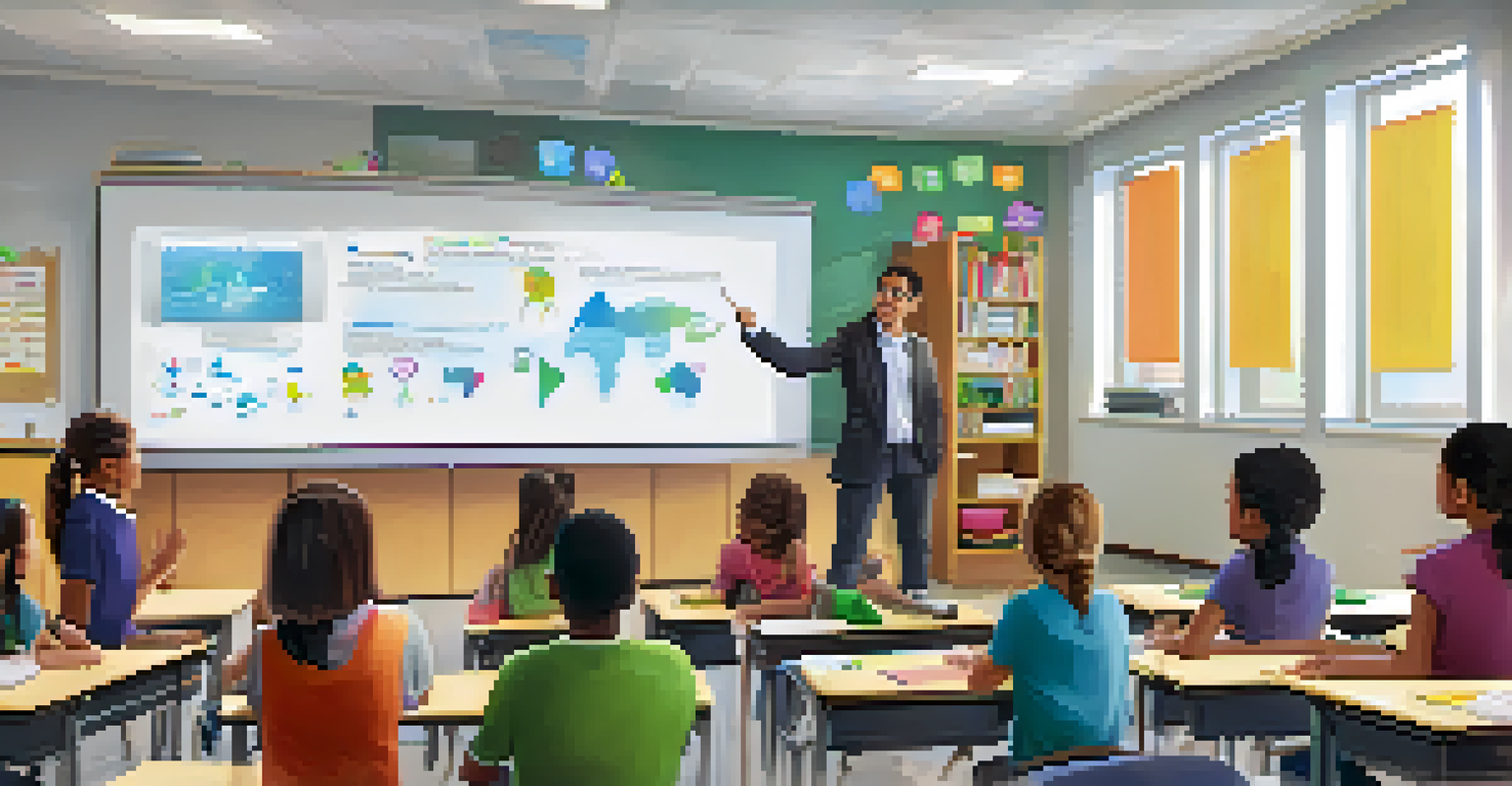Developing Digital Literacy in Student-Centered Learning

Understanding Digital Literacy in Education
Digital literacy is more than just knowing how to use technology; it's about understanding and critically evaluating the information found online. In today's digital age, students must learn to navigate an overwhelming amount of content, distinguishing between credible sources and misinformation. This foundational skill is crucial for academic success and lifelong learning.
The ability to critically evaluate information is one of the most important skills a student can develop in the digital age.
To cultivate digital literacy, educators need to create learning environments that encourage exploration and inquiry. When students are empowered to ask questions and seek answers through digital means, they become active participants in their education. This shift from passive consumption to critical engagement is at the heart of student-centered learning.
Moreover, digital literacy fosters a sense of responsibility among students. As they learn to engage with content thoughtfully, they also become aware of their digital footprint and the importance of online ethics. This awareness is essential as they prepare for a future where digital interactions are ubiquitous.
The Role of Technology in Student-Centered Learning
Technology plays a pivotal role in student-centered learning by providing diverse tools and resources that cater to different learning styles. For instance, interactive platforms allow students to collaborate on projects, share ideas, and receive immediate feedback. This collaborative approach not only enhances understanding but also builds essential communication skills.

Additionally, technology enables personalized learning experiences. With adaptive learning technologies, students can progress at their own pace, ensuring that they grasp concepts before moving forward. This individualized approach helps students feel more in control of their learning journey, promoting greater engagement and motivation.
Importance of Digital Literacy
Digital literacy is crucial for students to critically evaluate information and engage responsibly in the digital world.
However, it’s important to remember that the technology itself is not the goal; rather, it is a means to facilitate deeper learning experiences. Educators should thoughtfully integrate technology into their lessons, ensuring that it enhances rather than distracts from the learning objectives.
Creating a Collaborative Learning Environment
A collaborative learning environment encourages students to work together, share knowledge, and learn from each other's perspectives. This approach not only builds a sense of community but also enhances digital literacy as students engage in discussions and problem-solving activities using digital tools. Collaboration can occur through group projects, peer reviews, or online discussions.
Technology is best when it brings people together.
In such environments, educators can facilitate learning by guiding discussions and providing resources, while students take the lead in their learning processes. This shift helps them develop critical thinking and communication skills, as they articulate their ideas and challenge one another respectfully. It also cultivates a spirit of cooperation, which is essential in today’s interconnected world.
Moreover, collaborative learning promotes the use of digital tools, such as shared documents and online platforms, which are crucial for effective teamwork. By practicing these skills in a safe setting, students are better prepared for real-world scenarios where collaboration often extends beyond the classroom.
Encouraging Critical Thinking through Digital Tools
Critical thinking is a vital skill that can be developed through the thoughtful use of digital tools. When students are tasked with evaluating sources, analyzing data, or creating digital content, they engage in higher-order thinking. This process helps them become discerning consumers of information, which is essential in an era rife with misinformation.
For example, educators can assign projects that require students to research a topic, compare multiple viewpoints, and present their findings through a digital medium. This not only hones their research skills but also encourages them to consider various perspectives and form well-rounded opinions. Such assignments empower students to take ownership of their learning.
Role of Technology in Learning
Technology enhances student-centered learning by providing personalized experiences and fostering collaboration among students.
Additionally, incorporating tools like blogs, podcasts, or videos allows students to express their thoughts creatively. By presenting their ideas to an audience, they learn to construct arguments and support their claims, further enhancing their critical thinking capabilities.
Integrating Digital Citizenship into Learning
Digital citizenship refers to the responsible use of technology and the internet. As students engage in digital learning, it's essential to teach them about online etiquette, privacy, and the importance of respectful communication. By embedding digital citizenship into the curriculum, educators can help students navigate the complexities of online interactions.
For instance, lessons on protecting personal information and understanding copyright laws are crucial in fostering responsible digital behavior. These discussions not only prepare students for safe online practices but also encourage them to reflect on their digital actions and their impact on others.
Moreover, cultivating a culture of respect and empathy online is vital. When students understand the consequences of their digital footprint, they are more likely to engage positively in online communities. This awareness nurtures a generation of mindful digital citizens who contribute positively to the digital landscape.
Assessing Digital Literacy Skills in Students
Assessment is a key component in developing digital literacy skills. Educators should focus on evaluating not only students' knowledge of digital tools but also their ability to apply these skills in real-world contexts. This can be done through project-based assessments, where students demonstrate their understanding by creating digital content or solving problems collaboratively.
Furthermore, incorporating self-assessments and peer evaluations can provide valuable insights into students' progress. These reflective practices encourage students to think critically about their learning and identify areas for improvement. Such assessments empower them to take an active role in their own educational journey.
Future of Digital Skills Education
As technology evolves, educators must prioritize digital literacy to prepare students for the complexities of a digital society.
Additionally, formative assessments throughout the learning process can help educators tailor their instruction to meet students' needs. By regularly checking in on students' digital literacy skills, teachers can identify gaps and provide targeted support, ensuring that all students are equipped for success in a digital world.
The Future of Digital Literacy in Education
As technology continues to evolve, the importance of digital literacy in education will only grow. Future learners will need to navigate increasingly complex digital landscapes, making it essential for educators to stay ahead of the curve. By embracing innovative teaching strategies and integrating new technologies, educators can prepare students for the challenges of the future.
Moreover, fostering a culture of lifelong learning is crucial. Students should be encouraged to continually seek out new information, tools, and methods to enhance their digital skills. This mindset will serve them well in a rapidly changing world where adaptability is key.

Ultimately, the goal is to equip students not just with technical skills, but also with the confidence and critical thinking abilities to thrive in a digital society. By prioritizing digital literacy in student-centered learning, we can empower the next generation to become informed, responsible, and engaged digital citizens.